6 Medicinal Trees for Stiff Joints and Pain
6 medicinal trees that can help with pain and inflammation. Relatives of these medicinal trees grow all over the world, so they should be growing near you.
Non-steroid anti-inflammatories have been found to increase the risk of heart attack and stroke even in the first week of use. The FDA recently issued new labelling requirements for prescription NSAIDs to include this warning. OTC NSAIDs already carry this label. Do you take the risk and use the pills or are there safer, natural alternatives that might work instead?
I’d like to introduce you to 6 medicinal trees growing in my zone 3 forest garden that can help with pain and inflammation. Relatives of these medicinal trees grow all over the world, so you should be able to find them in forests, city parks, and streamsides near you. Tree medicine is a viable alternative to NSAIDs, for some people.
6 medicinal trees for arthritis symptoms
Spring is the time to harvest medicinal trees when the bark slips easily from the branches with the sap run. In some cases, you’ll want to harvest this potent medicine before leaf break, other times you can harvest as needed. First, let me tell you about this potent and ancient medicine found in our forest trees.
When joints are stiff and inflammation causes pain, medicinal trees can help ease inflammation and stiffness. Remembering the straightness of trees and the way they bend in the wind can help to remind us which remedies are best for stiffness and joints that won’t bend without pain.
Poplars and willow family trees found throughout the world are our tree medicine for pain and stiffness. In spring when the sap flows, last year’s growth will be coloured with the sap flow. These are the branches that are the easiest to harvest for medicine. Leave the main trunk alone, so that you don’t introduce any wounds that may become infected. This will ensure that the trees will be around for many years of harvest.
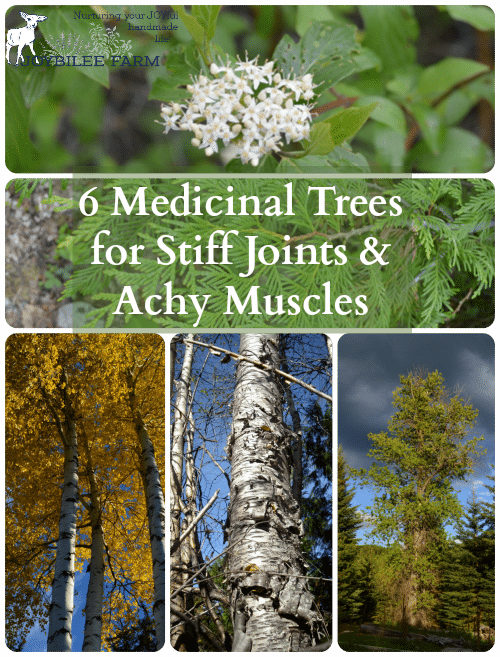
Harvest bark by cutting a branch from the tree and peeling back the bark from the entire branch. The tree medicine is the inner bark. On young branches, you can take the entire bark. On older wood that is more than 2 years old, you need to scrape or peel the inner bark layer from the outer bark. The inner bark or phloem is the pipeline that allows food to pass from the roots to the rest of the tree. This part of the tree lives for a short time and then turns into the outer bark. A new layer of phloem forms the following year. This is where the tree’s potent medicine resides.
But willows and poplars aren’t the only tree medicine for achy joints and sore muscles. Here are just 6 of the many medicinal trees that grow in my zone 3 forest garden. Similar species growing near you will have similar actions.
Our medicinal tree apothecary
Birch (Betula papyrifera, B. nigra, B. lenta )
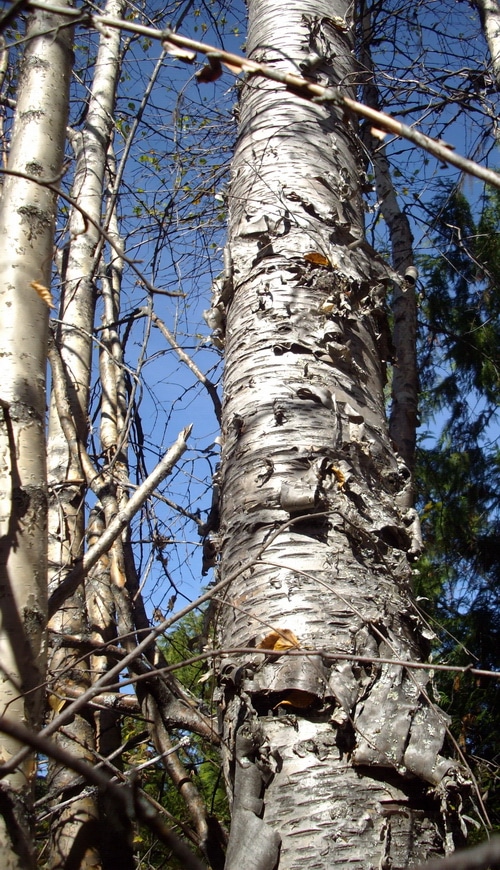
Gather the twigs and leaves and infuse them in alcohol to make an anti-inflammatory and analgesic liniment. Make a tea from the spring leaves and twigs with a strong wintergreen flavour. A decoction made with the inner bark is also pain-relieving. Tincture dose is 1 to 2 ml, 3 times a day. Decoction of dried herb is 2 tsp. of dried herb to 1 cup of boiling water, infused for 10 min. Drink 3 times a day.
Birch also gives up its abundant medicine in birch sap. See this post on tapping birch trees for sap in the spring. Birch contains salicylates.
Cedar (Thuja plicata, T. occidentalis)
Cedar is considered a sacred tree by many North American indigenous people. While its wood is considered a choice for outdoor applications because it is antifungal and insecticidal, the leaves and inner bark are also medicine. The leaves are rich in vitamin C and a tea made from the leaves and young twigs is used in winter to treat colds, flu, fevers, and arthritic pain. A fresh tincture is made with summer or fall gathered leaves, is highly antifungal, and immune-stimulating. Steam made by simmering the dried branches or adding the tincture to hot water is used to strengthen the lungs and protect from colds. Incense and smudge sticks made from cedar are used to clean indoor air. A warm poultice made with stewed cedar leaves, applied to painful joints can bring relief as well.
Cedar should not be used internally during pregnancy. In high doses, it stimulates uterine contractions.
Cottonwood or Balsam Poplar (Populus trichocarpa, P. balsamifera)
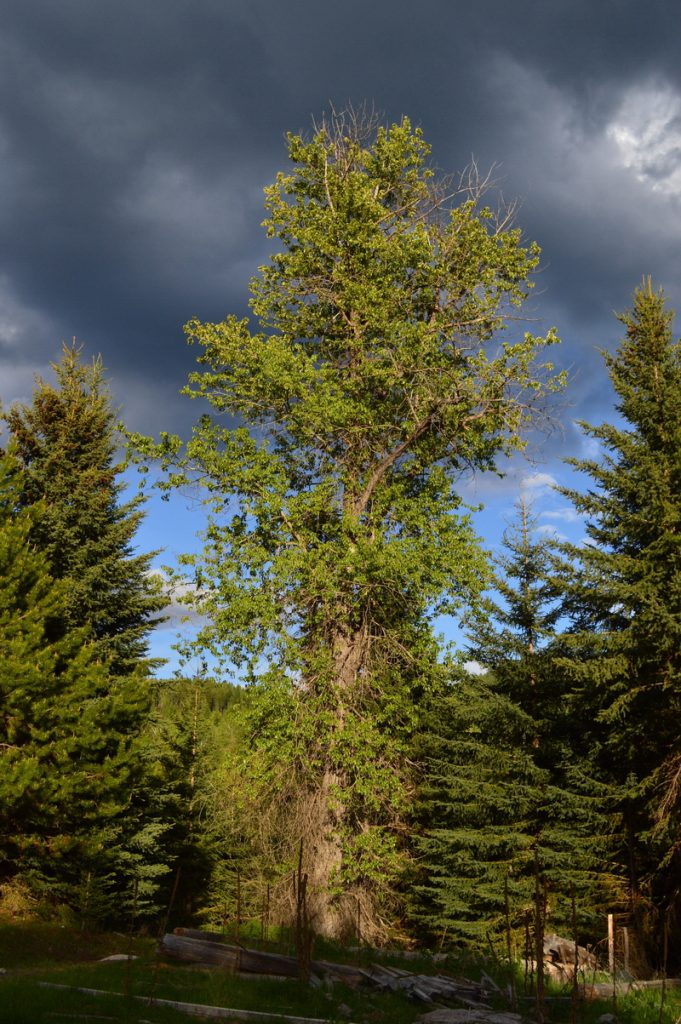
Gather the leaf bud before bud break or the whole twig with the buds attached. The resinous twigs and buds are infused in oil for a pain-relieving, anti-inflammatory salve that reduces both pain and swelling and promotes healing. The buds alone can be made into a tincture for coughs and congestion.
Poplar buds are expectorant, antimicrobial, vulnerary, anti-inflammatory, and analgesic. Balm of Gilead soothes and disinfects mucus membranes which help with a sore throat, coughs, and laryngitis. It is also used to treat chronic bronchitis. Externally it helps with the pain and inflammation of arthritis and rheumatism. It can also help with the pain and inflammation of scaly and dry skin conditions such as eczema and psoriasis.
When preparing Balm of Gilead for internal use, use only the spring buds. Dry immediately upon harvest. The buds mold easily after harvest so care should be taken to dry promptly. When preparing Balm of Gilead for external use, both buds and twigs can be infused in oil. The resinous property is contained in both young twigs and early spring buds.
For more information on harvesting, cottonwood buds see this post. Contains salicylate.
Dogwood (Cornus sericea, C. stolonifera, C. alba)
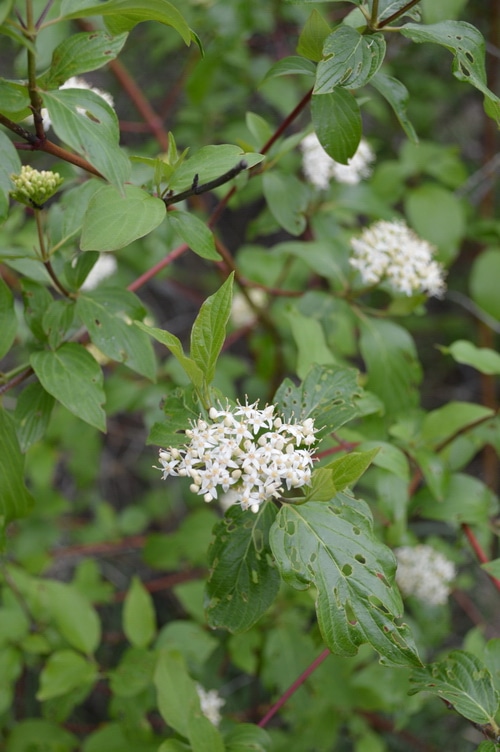
Also called red osier dogwood, red-stemmed dogwood, and red willow, dogwood has a long history of use among First Nations People. The bark on stems and the root bark is used both internally and externally to treat diarrhea, fevers, and skin problems. It is highly astringent. Bark shaving has a styptic property and has been used to control bleeding. It was used as an analgesic, anti-inflammatory, febrifuge, and tonic. Decoctions of the bark were used to treat headaches, coughs, colds, fevers, inflammation, and infection. An infusion of the flowers was used for intermittent fevers. The bark, flowers, and fruit were used as bitter tonics and astringents by many North American First Nations groups. The Shakers used it in the treatment of Typhoid fever and the flu.
Herbal actions of Cornus spp.: Alterative, antidiarrheal, antipyretic, astringent, hepatic, and diuretic.
Trembling Aspen (Populus tremuloides)
Aspen is anti-inflammatory, astringent, antiseptic, anodyne, cholagogue, and tonic. It is used for arthritis and rheumatism which is accompanied by pain and swelling. It is very effective for sudden flare-ups of arthritic pain. It helps stimulate digestion and supports liver and gallbladder function. Acting similarly to willow, it is an effective treatment for fever accompanying infections such as colds, flu, and cystitis. As an astringent, it’s helpful in the treatment of diarrhea and dysentery.
The inner bark and stem bark are harvested in the spring. It is prepared in a decoction using 2 tsp. of herb to 1 cup of water. Or prepare as a tincture.
Contains salicylate.
Willow (Salix spp.)
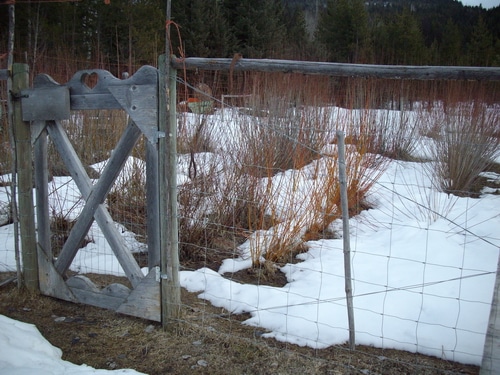
Willow is an ancient remedy that has been used for centuries to treat arthritis, rheumatism, gout, fevers, and aches of all kinds. It is considered to be the source of the modern drug aspirin. Willow is analgesic, anti-inflammatory, and tonic.
The bark from one-year-old wood is collected in spring as the sap begins to rise but before the leaf break. The bark is stripped from the young branches and dried. It can be tinctured or used as a decoction.
Willow contains salicylates.
Some contraindications:
There is some concern that herbs that contain salicylates may potentiate the effects of anticoagulant drugs causing internal bleeding. This interaction has never been demonstrated in laboratory experiments. However, it is advised not to combine salicylate herbs with anticoagulants in case of interaction.
While many medicinal trees get their antimicrobial, anti-inflammatory, and analgesic actions from salicylates, not all do. Many trees can be harvested during the summer to provide pain relief all year round. Dried bark and leaves should be renewed annually. They do not keep their medicinal qualities in storage for more than 18 months. However, alcohol tinctures made from dried plant material should keep indefinitely.
Bark or leaf-infused oil can be used to make a pain-relieving salve. This is especially effective with resinous barks like Balsam Poplar/Cottonwood, or resinous leaves like cedar.
Sometimes relief can be found using the plant in steam inhalation or externally as a poultice. So the next time you have achy joints and stiffness, consider going for a gentle walk in the woods, to gather some tree medicine. Then come back and heat a tea kettle for a soothing decoction of these ancient herbal allies.
I have a FREE gift for you

Grab my free ebook and learn to make DIY herbal healing salves at home now, with 14 easy-to-follow recipes that use the herbs and wild plants growing close to home. Salve-making is one of the easiest skills to learn in DIY Herbalism.


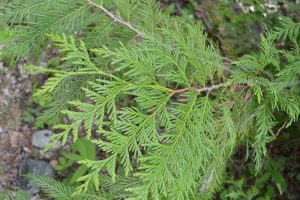
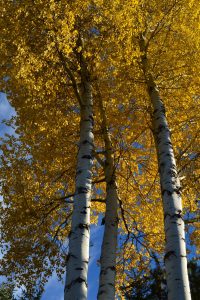

I loved all you taught. I would love to live at least close to a forest. I am going to make this an opportunity to change. I have Rheumatoid arthritis and have flare ups. Very painful and bring you to the lowest of lows. I am gobbling up all the marvelous knowledge and will use so as not to lose it. Thank you.
Willow bark helps me greatly to fight flare-ups!